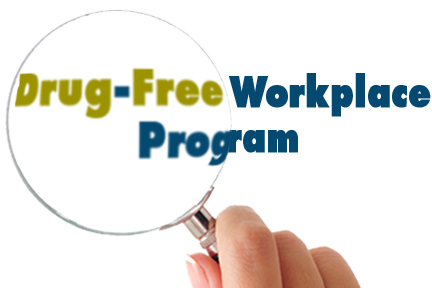Featured

Five Drug-Free Policy and Procedure “Must Haves”
(Winter 2014 [updated Fall 2019]) Written documents are critical for an effective and comprehensive drug-free workplace (DFWP) program. Especially as it pertains to drug and alcohol testing (considered search and seizure by the U.S. Supreme Court), a documented, memorialized program provides legal protection in the event your organization is challenged by a disgruntled employee or by the general public. A program must adhere to federal and state law and any other authority to which the company is subject.
An effective program dealing with employee drug use needs specific and clear policy statements and written directives to be operationalized consistently and fairly. Details in all documents need to be compulsory, complementary. Without thoughtful, detailed, company-specific procedures, an enterprise can be left floundering – and potentially exposed – when faced with real-life alcohol and other drug issues.
Here are examples of five operational issues that are often overlooked (but shouldn’t be) in DFWP policies and procedures:
- Alcohol Consumption: Is there ever a time when employees are allowed to drink in connection to work (e.g., at a holiday gathering, entertaining prospective clients, attending an out-of-town conference)? If so, clear, written parameters concerning that use need to be included in your policy or related program documents. Specific guidelines will not only serve to prevent problems associated with overconsumption, but they can also help insulate the company in the event there is litigation for damages caused by an intoxicated employee.
- Use of Prescription Drugs: Employees have protections under federal law regarding their use of prescription medications. But some medications’ side effects can jeopardize safety. Do employees know what to do if that happens? While you don’t want to prevent employees from properly using this medication, your program documents can and should offer directives for what employees should do if they are taking something that could jeopardize the safety or productivity of the organization.
- Post-Accident Testing: Testing an employee after an accident is prudent. But what counts as an accident in your organization? To prevent management from making decisions based on subjective criteria (e.g., they think the employee was high), a detailed, objective definition of what constitutes an accident that qualifies for post-accident testing – leaving little doubt when to send, or not send, an employee for a post-accident test – needs to be written down and meticulously followed.
- Program Coverage: A company’s drug-free workplace program typically applies to both full- and part-time employees. But what about temporary employees, interns, independent contractors or volunteers? Are these individuals subject to all — or just some — of program rules and testing applications? Are they excluded altogether or covered under a different contractual agreement? An operationally sound program should clearly articulate the expectations of all individuals that could impact the safety, productivity or public image of your organization.
- Employee Assistance: Drug-free workplace programs are designed to help employees, in addition to helping the organization. Does your program provide specific directions to employees struggling with alcohol or other drug issues? Where can they go for help, and what if they need time off to see a counselor? What safety precautions should the company take if an employee voluntarily shares information about a problem or is identified as having a problem via a positive test? These decisions will be influenced not only by your organization’s preferences and needs but by any compliance mandates you must follow. However, whatever action is taken in this situation must be dictated by your program’s written documents.
Addressing real-life situations like these five, along with others you will encounter while operating your drug-free workplace program, makes your program live in a functional way.
The procedures for handling situations may be contained in a single drug-free workplace policy or, to prevent the policy from becoming too cumbersome, in a separate program procedures document.
Always remember, a program dealing with employee drug use, doesn’t live in a silo separate from non-drug-free workplace policies and procedures. Practices need to be interwoven with all other related corporate policies (e.g., HR, safety, administrative). For example, to deal with drug issues responsibly an employer needs to have policies and procedures around drug testing, fair-chance practices, time-off guidelines, applicable insurance, benefits and other available assistance, re-entry support, and more. Regardless of where you put the information, operational details on all related corporate practices must be congruous and documented.
While operating your DFWP program, if something comes up, you must be able to pull out your policy (or policies) and procedures to guide your actions. And if something happens and you don’t know how to respond, don’t wing it. Find a specialist who knows the law, can help you work through the situation and ultimately add a new operational procedure to your program.
DISCLAIMER: This publication is designed to provide accurate information regarding the subject matter covered. It is provided with the understanding that those involved in the publication are not engaged in rendering legal counsel. If legal advice is required, the services of a competent professional should be sought.